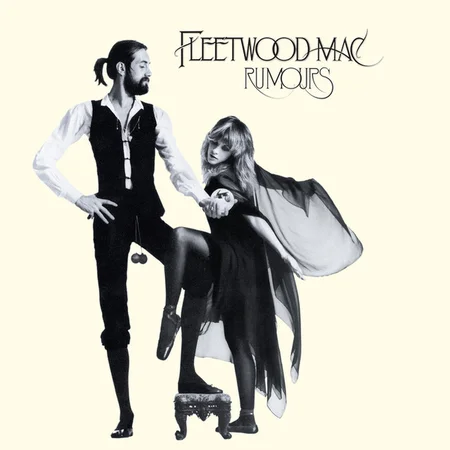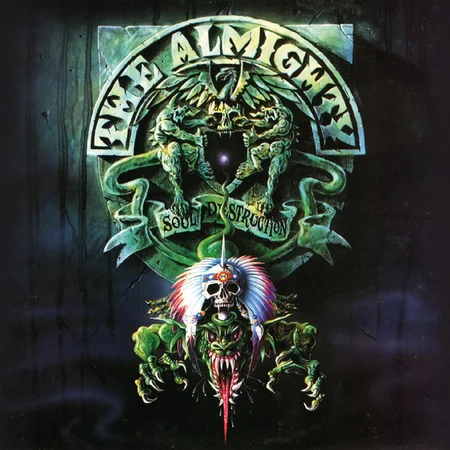
Introduction
Fleetwood Mac’s “Rumours” is more than just an album; it’s a cultural phenomenon that has captivated audiences for decades. Released in 1977, it remains one of the best-selling albums of all time, with over 40 million copies sold worldwide. Its creation, marked by personal turmoil and artistic genius, has cemented its place in music history. In this article, we’ll delve into the album’s background, recording process, commercial success, and enduring legacy.
| Attribute | Details |
|---|---|
| Release date | February 4, 1977 (US); February 11, 1977 (UK) |
| Album title | Rumours |
| Genre | Rock, Pop Rock |
| Total runtime | 39:03 |
| Number of tracks | 11 |
| Record label | Warner Bros. Records |
| Recording studio | Criteria Studios, Record Plant, Wally Heider’s Studio 3, Davlen Sound Studios |
| Producer(s) | Fleetwood Mac, Ken Caillat, Richard Dashut |
The album’s impact is undeniable, as it topped the Billboard 200 for 31 weeks and won the Grammy Award for Album of the Year in 1978. Its timeless appeal is reflected in the emotional depth and universal themes of love, heartbreak, and resilience. Stevie Nicks once said, “We were all writing about each other… the songs were the conversations we couldn’t have.” This candid expression of personal experiences resonated with audiences then and continues to do so today.
The Genesis of “Rumours”
The story of “Rumours” begins in the mid-1970s, a period of great change for Fleetwood Mac. The band had undergone several lineup changes before finding stability with Lindsey Buckingham and Stevie Nicks. Their 1975 self-titled album brought commercial success, setting the stage for “Rumours.” However, personal relationships within the band were fraught with tension, which heavily influenced the album’s creation.
Musically, Fleetwood Mac was at a crossroads. The blend of rock, pop, and folk elements in their previous work laid the foundation for “Rumours.” The album’s sound was shaped by the individual contributions of its members, each bringing their unique style and emotional baggage to the table. The main songwriters—Buckingham, Nicks, and Christine McVie—crafted songs that reflected their personal struggles and relationships.
The band members and their roles in the album are detailed below:
| Member | Role |
|---|---|
| Lindsey Buckingham | Guitars, Vocals, Percussion |
| Stevie Nicks | Vocals |
| Christine McVie | Keyboards, Synthesizer, Vocals |
| John McVie | Bass Guitar |
| Mick Fleetwood | Drums, Percussion |
Financially, the recording was a challenge. The band faced a tight budget, with Warner Bros. Records financing the sessions. Despite the financial constraints, the band persevered, driven by a shared belief in the project’s potential. The album’s title, “Rumours,” was inspired by the gossip and speculation surrounding the band members’ personal lives. The artwork, designed by Herbert Worthington, features Mick Fleetwood and Stevie Nicks in a whimsical pose, capturing the album’s playful yet intense spirit.
Recording Process
The recording of “Rumours” was as dramatic as the stories behind its songs. Sessions began in February 1976 at the Record Plant in Sausalito, California. The atmosphere was chaotic, with long hours and frequent parties. The band members were often at odds, yet this tension fueled their creativity. Producers Ken Caillat and Richard Dashut played a crucial role, guiding the band through the tumultuous process.
The studio setup was impressive for its time. The Record Plant featured state-of-the-art equipment, including an API console and Westlake monitors. The use of two 3M 24-track tape machines allowed for complex layering of instruments and vocals. The engineers employed various microphones, such as the Sennheiser MD 441 for kick drums and the AKG C414 for snare, to capture the album’s distinctive sound.
Here’s a table of likely hardware used during the recording:
| Equipment | Details |
|---|---|
| Mixing Desk | API Console |
| Monitors | Westlake Monitors |
| Tape Recorders | 3M 24-track Tape Machines |
| Microphones | Sennheiser MD 441, AKG C414 |
| Compressors | UREi LA3A, 1176 |
During the sessions, the band faced numerous challenges. Technical issues with the tapes delayed the album’s release, and personal conflicts often disrupted the recording process. Yet, these obstacles only added to the album’s raw and emotional depth. Ken Caillat, who also worked on other notable projects, brought his expertise to ensure the album’s high production quality.
Commercial Performance and Reception
Upon its release, “Rumours” achieved phenomenal commercial success. It reached number one on the Billboard 200 and topped charts in several countries. The album’s universal themes and polished production resonated with audiences worldwide. Its singles, such as “Go Your Own Way” and “Dreams,” became instant hits, further cementing the album’s status.
Fleetwood Mac’s discography showcases their evolution as a band. Below is a table of their studio albums:
| Album | Year | Sales Data |
|---|---|---|
| Fleetwood Mac | 1968 | No certification |
| Then Play On | 1969 | No certification |
| Kiln House | 1970 | No certification |
| Future Games | 1971 | 500,000 (certified in 2000) |
| Bare Trees | 1972 | 1,000,000 (certified in 1988) |
| Penguin | 1973 | No certification |
| Mystery to Me | 1973 | 500,000 (certified in 1976) |
| Heroes Are Hard to Find | 1974 | No certification |
| Fleetwood Mac | 1975 | 7,000,000 (certified in 2018) |
| Rumours | 1977 | 20,000,000 (certified in 2014) |
| Tusk | 1979 | 2,000,000 (certified in 1984) |
| Mirage | 1982 | 2,000,000 (certified in 1984) |
| Tango in the Night | 1987 | 3,000,000 (certified in 2000) |
| Behind the Mask | 1990 | 500,000 (certified in 1990) |
| Time | 1995 | 50,000 (not certified) |
| Say You Will | 2003 | 500,000 (certified in 2003) |
“Rumours” received numerous accolades, including the Grammy Award for Album of the Year in 1978. It has been preserved in the National Recording Registry for its cultural significance. In 1977, other notable albums included Animals by Pink Floyd, Let There Be Rock by AC/DC, and News of the World by Queen. These releases, alongside “Rumours,” defined the musical landscape of the time.
1977 was a year of significant events in music. Bands like Def Leppard and Misfits formed, while others like Lynyrd Skynyrd disbanded following a tragic plane crash. The heavy metal scene saw the emergence of the New Wave of British Heavy Metal, with bands like Judas Priest leading the charge. These developments set the stage for the evolution of rock and metal music in the years to come.
Track Analysis
The singles released from “Rumours” played a crucial role in its success. “Go Your Own Way,” “Dreams,” “Don’t Stop,” and “You Make Loving Fun” were not only chart-toppers but also showcased the band’s songwriting prowess. Each track offered a glimpse into the personal lives of the band members, making the album relatable and engaging.
Below is a detailed table of the album’s tracks:
| Track Name | Length | Writing Credit |
|---|---|---|
| Second Hand News* | 2:43 | Lindsey Buckingham |
| Dreams* | 4:14 | Stevie Nicks |
| Never Going Back Again | 2:02 | Lindsey Buckingham |
| Don’t Stop* | 3:11 | Christine McVie |
| Go Your Own Way* | 3:38 | Lindsey Buckingham |
| Songbird | 3:20 | Christine McVie |
| The Chain | 4:28 | Buckingham, Fleetwood, McVie, McVie, Nicks |
| You Make Loving Fun* | 3:31 | Christine McVie |
| I Don’t Want to Know | 3:11 | Stevie Nicks |
| Oh Daddy | 3:54 | Christine McVie |
| Gold Dust Woman | 4:51 | Stevie Nicks |
Note: Tracks marked with * were singles. “Go Your Own Way” reached number 10 on the Billboard Hot 100, “Dreams” hit number 1, “Don’t Stop” peaked at number 3, and “You Make Loving Fun” climbed to number 9.
Song Meaning and Lyrics
The lyrics of “Rumours” delve deep into the personal lives of Fleetwood Mac’s members. “Go Your Own Way,” written by Lindsey Buckingham, is a raw reflection on his breakup with Stevie Nicks. The song’s lyrics express a mix of anger and vulnerability, capturing the essence of their tumultuous relationship. For more on the song’s meaning, see this analysis.
“Dreams,” penned by Stevie Nicks, offers a more philosophical take on love and loss. Its ethereal quality and haunting melody have made it one of the band’s most enduring tracks. Nicks has described it as a reflection on the inevitability of change and the need to move forward. Learn more about the song’s background here.
Christine McVie’s “Don’t Stop” exudes optimism and hope for the future. Written during her separation from John McVie, it encourages listeners to focus on tomorrow rather than dwell on the past. The song’s upbeat tempo and positive message have made it a fan favourite. Discover more about its meaning on Genius.
“You Make Loving Fun,” another of Christine McVie’s contributions, is a celebration of new love. Written about her relationship with the band’s lighting director, the song’s joyful lyrics contrast with the underlying melancholy of its melody. This complexity adds to its charm and appeal. For an in-depth look at the song, visit this page.
Touring and Promotion of Rumours
The promotion of “Rumours” was as extensive as its recording. Fleetwood Mac embarked on a worldwide tour, performing over 90 shows across North America, Europe, and Japan. The tour began on February 28, 1977, in Louisville, Kentucky, and concluded on August 30, 1978, in Los Angeles, California. The band played to sold-out arenas, captivating audiences with their electrifying performances.
Fleetwood Mac’s live shows were a spectacle, with elaborate stage setups and dynamic performances. The band often played alongside other notable artists, including Bob Welch and John Stewart. Despite the ongoing personal tensions, their professionalism shone through, delivering memorable concerts that left a lasting impression on fans worldwide.
Influences and Legacy
“Rumours” was influenced by various musical styles, from rock and pop to folk and blues. The band’s eclectic sound drew inspiration from artists like The Beatles and The Rolling Stones. In turn, “Rumours” has influenced countless musicians, including Sheryl Crow, The Dixie Chicks, and Haim, who have cited the album as a significant inspiration in their work.
Below is a table of influences:
| Influences on “Rumours” | Artists Influenced by “Rumours” |
|---|---|
| The Beatles | Sheryl Crow |
| The Rolling Stones | The Dixie Chicks |
| Bob Dylan | Haim |
The year 1977 was a landmark in cultural history. It saw the release of films like Star Wars and Saturday Night Fever, which revolutionised the film industry. In the UK, Queen Elizabeth II celebrated her Silver Jubilee, marking 25 years on the throne. The world was in flux, with political changes and technological advancements shaping the future. Amidst this backdrop, “Rumours” emerged as a defining moment in music, capturing the spirit of the era.
Five Things about Rumours
Here are five intriguing facts about “Rumours”:
| Fact | Details |
|---|---|
| Cultural Impact | “Rumours” has been preserved in the National Recording Registry for its cultural significance. |
| Sales Milestone | The album has sold over 40 million copies worldwide. |
| Grammy Winner | Won the Grammy Award for Album of the Year in 1978. |
| Live Performances | The band performed over 90 shows during the Rumours tour. |
| Recording Duration | The album was recorded over a span of 12 months in 1976. |
Media and Television Usage
Fleetwood Mac’s “Rumours” has left an indelible mark on media and television. The album’s songs have been featured in numerous films and TV shows, enhancing their emotional impact and broadening their reach. Below is a table of notable media appearances:
| Song Title | Media | Year |
|---|---|---|
| The Chain | Guardians of the Galaxy Vol. 2 | 2017 |
| Go Your Own Way | Forrest Gump | 1994 |
| Dreams | Glee (Season 2, Episode 19) | 2011 |
| Never Going Back Again | Glee (Season 2, Episode 19) | 2011 |
| Songbird | Glee (Season 2, Episode 19) | 2011 |
| I Don’t Want to Know | Glee (Season 2, Episode 19) | 2011 |
| Don’t Stop | Glee (Season 2, Episode 19) | 2011 |
| Gold Dust Woman | The Crow: City of Angels (performed by Hole) | 1996 |
Critical Reviews and Retrospectives
“Rumours” has been the subject of numerous critical reviews and retrospectives, praised for its production quality and emotional depth. Publications have lauded its timeless appeal and the raw honesty of its lyrics. Below is a table of notable reviews:
| Publication | Review Score | Notable Quote |
|---|---|---|
| Rolling Stone | 5/5 | “A masterpiece of pop rock.” |
| AllMusic | 5/5 | “Timeless and universally relatable.” |
After Rumours
Following the release of “Rumours,” Fleetwood Mac continued to evolve. The band’s subsequent albums, such as “Tusk” and “Mirage,” explored new musical directions while maintaining their signature sound. However, personal tensions persisted, leading to lineup changes and solo projects. Despite these challenges, Fleetwood Mac remains an iconic band, with their music continuing to inspire new generations.
As of 2025, Fleetwood Mac’s legacy endures. The band has released several compilations and live albums, celebrating their storied career. Although the future of the band is uncertain following the passing of Christine McVie in 2022, their influence on music and culture remains undeniable.
Remasters and Reissues
“Rumours” has seen numerous remasters and reissues over the years, enhancing its sound quality and introducing the album to new audiences. These editions often include bonus tracks, live recordings, and previously unreleased material, offering fans a deeper insight into the album’s creation.
| Edition | Release Date |
|---|---|
| 35th Anniversary Edition | January 28, 2013 |
| Super Deluxe Edition | January 15, 2013 |
These reissues have allowed “Rumours” to maintain its relevance, ensuring that its legacy continues to grow. Each edition offers a fresh perspective on the album, highlighting its enduring appeal and the timeless quality of its music.
Conclusion
In conclusion, “Rumours” by Fleetwood Mac is a timeless classic that continues to captivate audiences with its emotional depth and musical brilliance. Its impact on music and culture is profound, and its legacy endures through reissues and live performances. As we reflect on the album’s significance, it is clear that “Rumours” will remain a defining moment in music history for generations to come.
Further Reading
For more insights into Fleetwood Mac and similar genres, explore our other articles and podcasts:
The Making of Ace of Spades by Motörhead – Our blog article delves into the creation of this iconic album.
Def Leppard – Hysteria – Discover the story behind this legendary album in our blog article.
For additional information, visit the Wikipedia page for “Rumours”, the Official Fleetwood Mac website, and the Record label’s website.
Let us know in the comments what your thoughts are on Rumours by Fleetwood Mac. Did we miss anything? Share your experiences and join the conversation!





